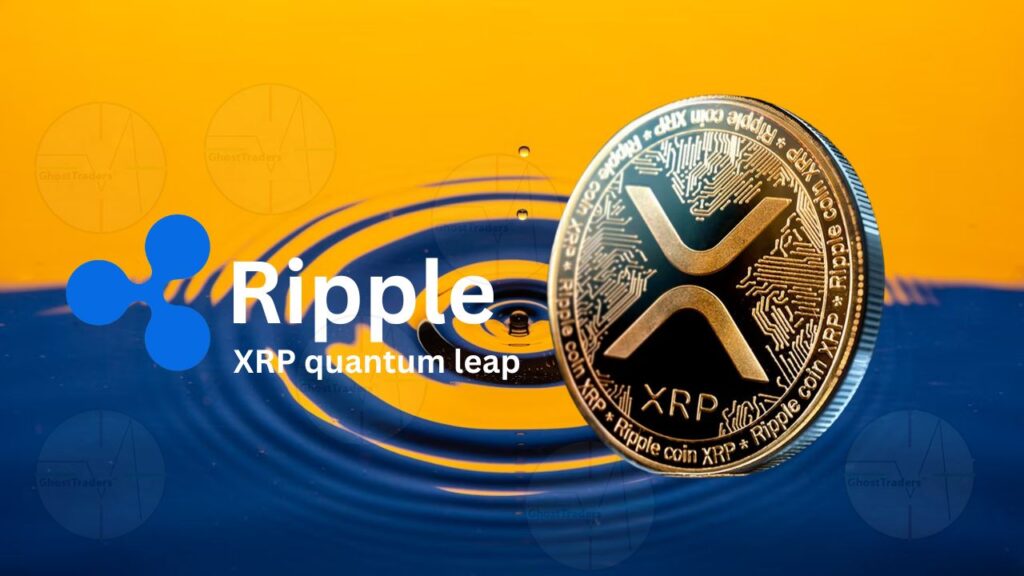XRP’s Quantum Leap is the anticipated moment when XRP, the digital asset developed by Ripple, experiences a massive surge in adoption, utility, and value—driven by regulatory clarity, institutional adoption, and global financial integration. Unlike speculative crypto projects, XRP is already embedded in the banking infrastructure, enabling real-time, low-cost, cross-border payments through RippleNet and its On-Demand Liquidity (ODL) solution. Ripple’s technology is designed to replace outdated SWIFT systems, making international transactions instant, efficient, and cost-effective.
What sets Ripple XRP apart is its compliance with ISO 20022, the global financial messaging standard that banks and financial institutions are adopting for seamless communication. This puts XRP in a unique position to integrate directly into the traditional financial system, unlike most cryptocurrencies. As global payment systems migrate to ISO 20022, XRP is one of the few digital assets positioned to bridge the gap between crypto and traditional finance, making it a key player in the future of banking and cross-border payments.
What Does ‘Quantum Leap’ Mean for XRP?
A quantum leap in this context refers to a dramatic shift in XRP’s adoption, market value, and utility. Several key factors could drive this transformation:
1. Mass Adoption by Banks and Financial Institutions
Ripple’s On-Demand Liquidity (ODL) system already enables real-time, low-cost cross-border payments. If ODL becomes the industry standard, XRP could emerge as the preferred cryptocurrency for global banking and remittance networks.
2. Regulatory Clarity
One of the biggest hurdles for XRP has been legal uncertainty, particularly the SEC lawsuit against Ripple. If XRP gains clear regulatory approval, institutional investors and financial institutions may flood into the ecosystem, significantly boosting its adoption and price.
3. Technological Advancements
The XRP Ledger (XRPL) is constantly evolving. Innovations like sidechains, automated market makers (AMMs), and smart contract integrations could greatly expand its functionality beyond payments, making XRP a critical player in Decentralized Finance (DeFi) and Central Bank Digital Currencies (CBDCs).
XRP’s Role in the Crypto Revolution
Unlike Bitcoin (BTC), which is primarily a store of value, or Ethereum (ETH), which powers smart contracts, XRP is built for speed and efficiency in transactions.
- Banking Networks – XRP is already integrated into the banking sector, working with giants like Santander, Bank of America, and SBI Holdings to streamline international payments.
- Remittance Services – XRP could revolutionize the $700+ billion global remittance market, drastically reducing transaction costs and settlement times.
As financial institutions increasingly shift to blockchain-based payment solutions, XRP is uniquely positioned to dominate this space.
Key Triggers for XRP’s Quantum Leap
Several catalysts could propel XRP into a new era of growth:
1. Global Banking Adoption
More financial institutions are testing RippleNet and ODL for seamless cross-border payments. If major banks fully integrate XRP, demand could skyrocket.
2. Legal Clarity & SEC Resolution
A favorable outcome in the SEC lawsuit would remove one of XRP’s biggest roadblocks, inviting institutional investors and expanding XRP’s market credibility.
3. Market Utility & ODL Expansion
The growing use of ODL means more XRP transactions, boosting liquidity and making the asset even more valuable.
4. Integration with CBDCs
Many central banks are developing Central Bank Digital Currencies (CBDCs). If XRP’s technology is integrated into these digital currencies, its role in global finance will be solidified.
When Will XRP’s Quantum Leap Happen?
Predicting exact timelines is difficult, but key indicators include:
- Regulatory Clarity – A legal victory or settlement with the SEC would be a turning point.
- Institutional Adoption – Watch for increased partnerships with global banks and payment providers.
- Technological Updates – Continued innovation on the XRPL could enhance XRP’s use cases and value.
Conclusion
XRP is poised for a major transformation. If regulatory clarity is achieved, institutional adoption grows, and Ripple’s technology continues to evolve, XRP’s quantum leap could redefine global payments.
Staying informed on XRP’s progress is crucial for investors and crypto enthusiasts. The next few years could determine whether XRP cements itself as the backbone of international transactions or remains stuck in legal and regulatory uncertainty.

